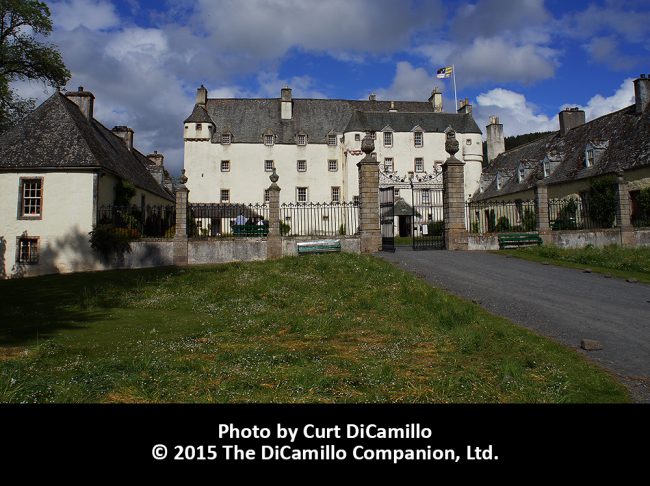
The entrance facade
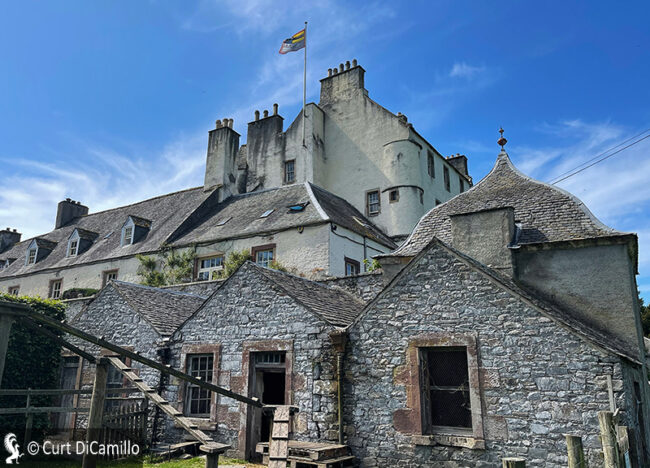
A side view of the house

The High Drawing Room
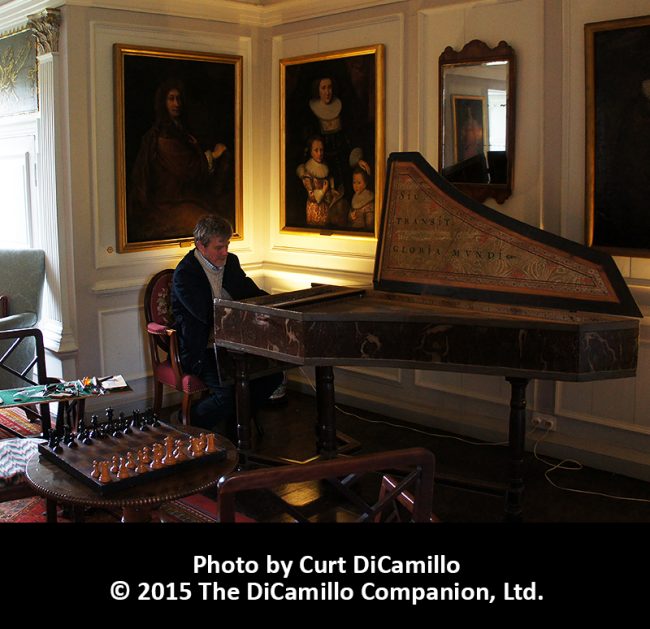
Performance on the 1651 Traquair harpsichord in the High Drawing Room

The book stack for Terence in the First Library
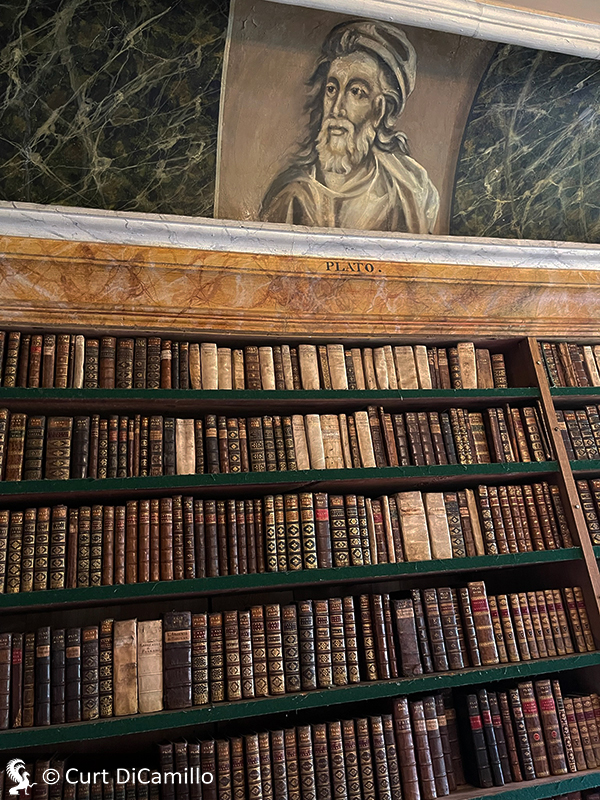
The First Library
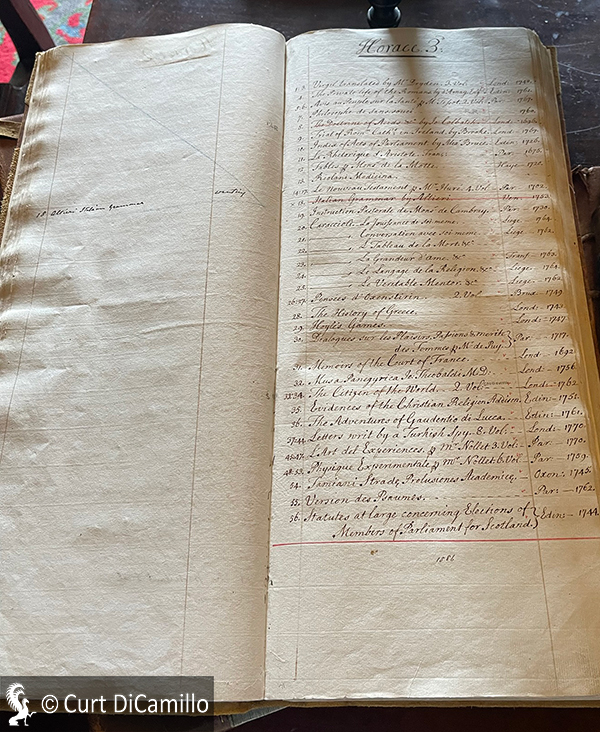
The cataloging system for the First Library
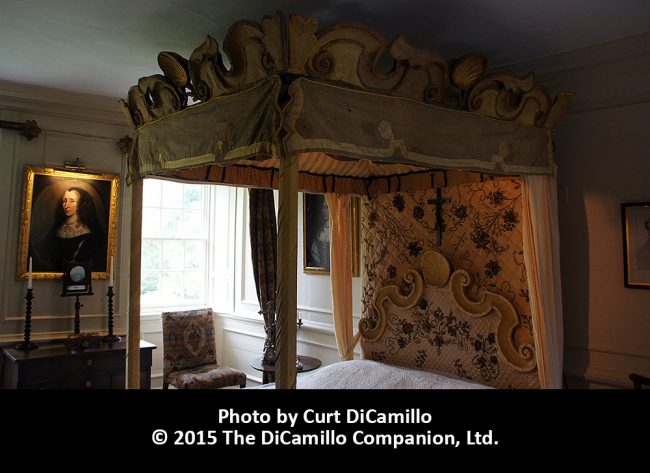
Bedroom
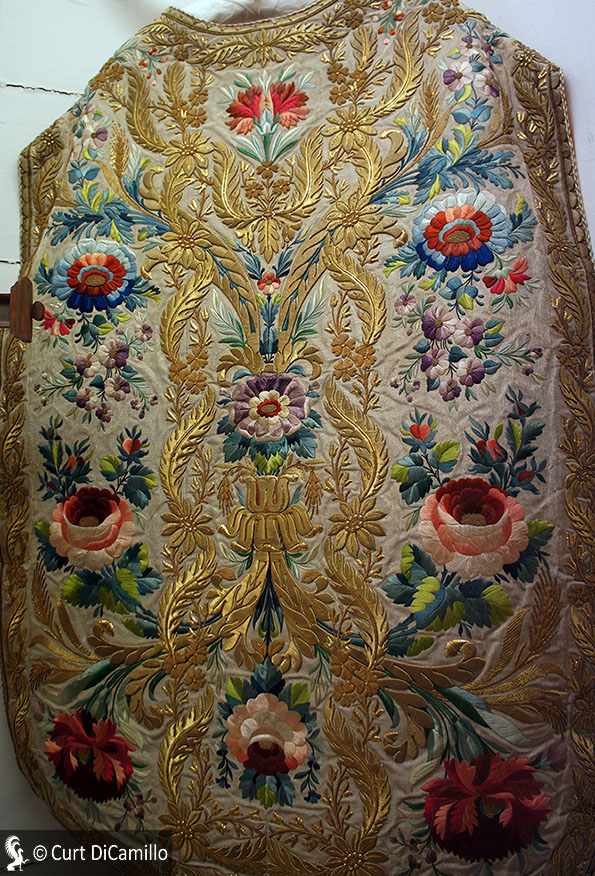
A priest's chasuble. This probably 19th century vestment would have been used for services at Traquair after the passage of the Catholic Emancipation Act in 1829 allowed more freedom for Catholics in Britain.

The view of the approach from the house
House & Family History: Continually inhabited for over 10 centuries, Traquair is the oldest inhabited house in Scotland. The house was originally a 12th century hunting lodge of Scottish kings, with the first recorded royal visit being from King Alexander I, who arrived in 1107 (27 Scottish kings have visited Traquair). The Scottish Crown owned Traquair until 1478, when the house passed to a branch of the royal Stuart family, whose descendants continue to live here today. Passionate Catholics, the family remained loyal to the Jacobite cause and were supporters of Mary, Queen of Scots; consequently, they suffered significantly for their faith and loyalty. After the Glorious Revolution of 1688, anti-Catholic hysteria reached such a level that a Protestant mob marched out from Peebles and ransacked Traquair, destroying all the Catholic religious objects they found. The house was extensively enlarged and renovated in the 16th and 17th centuries, resulting in sumptuously decorated rooms, including one of the best-preserved libraries in Scotland. The famous library (see "Images" section) features coving that is painted with heads of classical philosophers and writers. These portraits aren't simply decorative; they also serve as the reference system for finding books in the library. For example, "Horace 2 XII," gives the book stack, the shelf number, and the position of the book on the shelf. All the books were cataloged using this system in a large leather-bound book when the library was installed, and it's still in use today! Traquair is important because it predates the Scottish Baronial style of architecture and was very likely seminal in the creation of the style.
Collections: Traquair is particularly rich in collections involving with the Catholic Church in Scotland, the Jacobite Risings, and objects associated with Mary, Queen of Scots, including her rosary and crucifix.
Garden & Outbuildings: The famous Bear Gates, located at the top of the main drive, were built in 1739. After Bonnie Prince Charlie left Traquair with his army in 1745, the 5th Earl of Traquair closed the gates and said they would not be opened again until a Stuart sat on the throne of Scotland. The Traquair Estate today covers 4,500 acres.
Architect: James Smith
Date: Circa 1695-99Country Life: CVI, 610 plan, 1949.
Title: Historic Houses of Britain - WORKING COPY
Author: Girouard, Mark
Year Published: 1979
Reference: pgs. 58-59
Publisher: New York: British Heritage Press
ISBN: 0517446464
Book Type: Hardback
Title: Buildings of Scotland: Borders, The
Author: Cruft, Kitty; Dunbar, John; Fawcett, Richard; et al
Year Published: 2006
Publisher: New Haven: Yale University Press
ISBN: 0300107021
Book Type: Hardback
Title: Biographical Dictionary of British Architects, 1600-1840, A - SOFTBACK
Author: Colvin, Howard
Year Published: 1995
Reference: pg. 896
Publisher: New Haven: Yale University Press
ISBN: 0300072074
Book Type: Softback
House Listed: Category A
Park Listed: Listed as a Garden & Designed Landscape
Current Seat / Home of: Catherine Maxwell-Stuart (Lady of Traquair), 21st Laird; Stuart family here since 1478.
Past Seat / Home of: King Alexander I of Scotland, 12th century. John Stewart, 1st Earl of Traquair, until 1659; John Stewart, 2nd Earl of Traquair, 1659-66; William Stewart, 3rd Earl of Traquair, 1666-73; Charles Stewart, 4th Earl of Traquair, 1673-1741; Charles Stewart, 5th Earl of Traquair, 1741-64; John Stewart, 6th Earl of Traquair, 1764-79; Charles Stewart, 7th Earl of Traquair, 1779-1827; Charles Stewart, 8th Earl of Traquair, 1827-61.
Current Ownership Type: Individual / Family Trust
Primary Current Ownership Use: Private Home
House Open to Public: Yes
Phone: 01896-830-323
Fax: 01896-830-639
Email: [email protected]
Website: https://www.traquair.co.uk
Historic Houses Member: Yes